Hey all! Real Farmer Jeff here.
When my friend sent me the graphic below showing how to grow 100 pounds of potatoes in just 4 square feet, I was intrigued. With only ~250 square feet of backyard space behind my townhouse, I’m always on the lookout for space-efficient gardening methods.
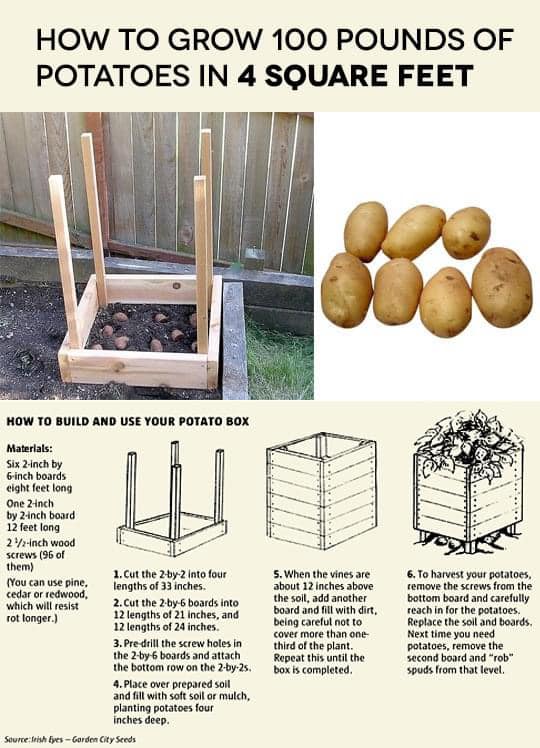
The idea of stacking up a potato tower and harvesting an enormous bounty sounded almost too good to be true. And, as I dug deeper (pun intended), I realized that in most cases, it actually is.
The premise is based on the idea that as you add more soil or straw to a potato tower, the plants will keep producing more tubers up the stem.
It turns out that while the viral claim of growing 100 pounds of potatoes in a tiny footprint makes for a great headline, it’s mostly fiction. But there’s some truth behind it if you understand how potatoes grow and choose the right varieties.
Let’s dive more into it below!

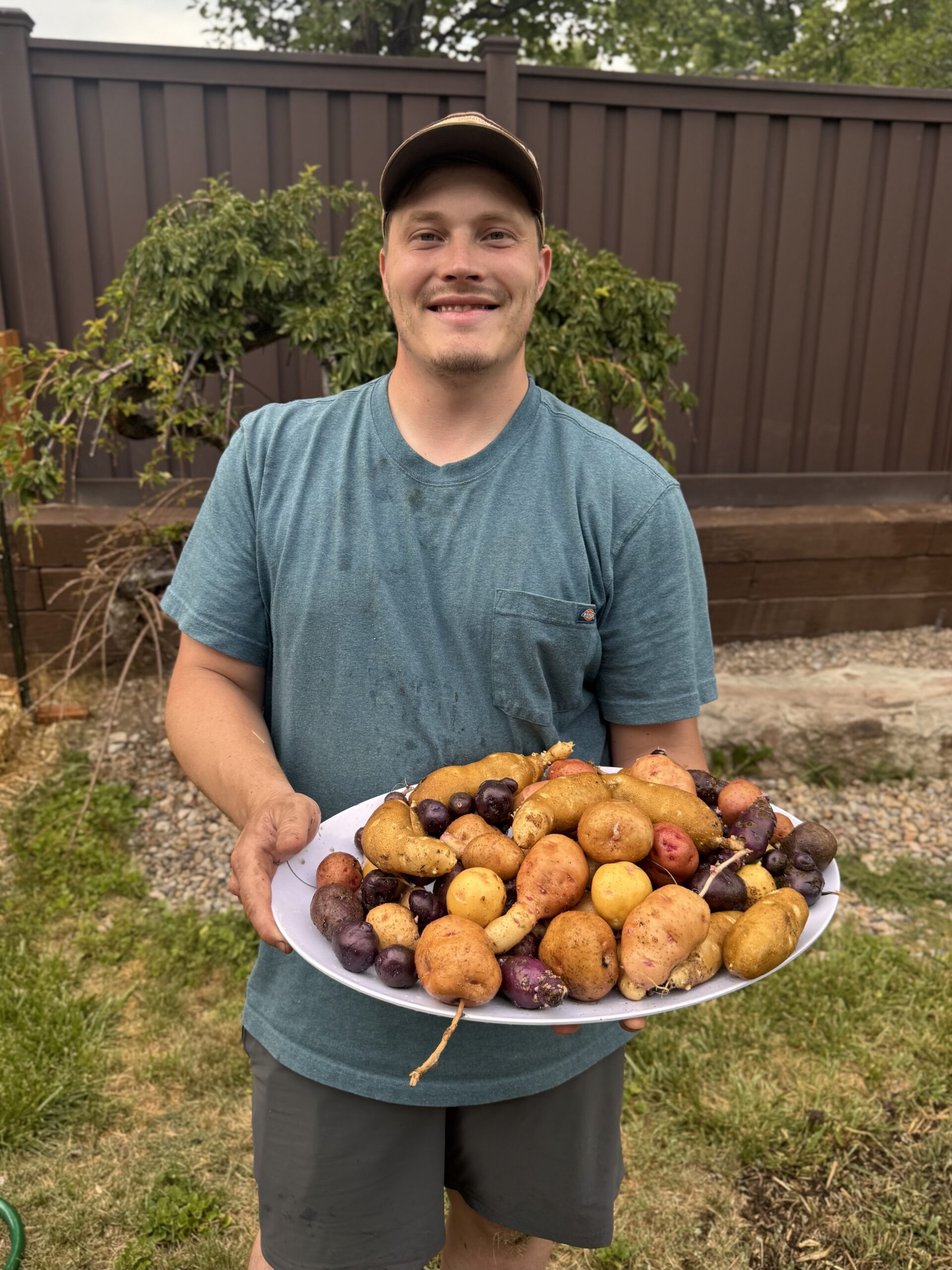
What Are “Stolons”?
Potatoes form from stolons, which are underground stems that grow horizontally from the plant’s main stem.
Tubers (the actual potatoes) form at the ends of these stolons under the right conditions (cool temps, shorter day length). Buried stem nodes can form additional stolons, but only if the potato variety is genetically able to do so.

Can Potatoes Grow Roots from the Stem Like Tomatoes?
Yes, potatoes can form roots from buried stem nodes! However, only indeterminate potatoes typically form new stolons (the structures that produce tubers) from these buried stems.
Determinate types tend to form roots rather than stolons when buried.
Above-ground signs like new shoot growth and healthy foliage are the most practical indicators of active stolon formation.
Once the plant’s leaves start to yellow and die back naturally, stolon and tuber formation generally stops, signaling that harvest time is near.

How to Know If New Stolons Are Being Produced Before Harvest
Although stolons grow underground and are not directly visible, there are 4 main ways to tell if your potato plants are still producing new stolons before harvest:
1. New Stem Growth
If you keep mounding soil or straw around the stems and the plant responds by growing new shoots from buried stem nodes, that usually means new stolons are forming underground from those nodes.
Active vertical growth and fresh stems indicate the plant is still in “growth mode,” so stolon production is likely continuing.
2. Healthy, Deep Green Foliage
Vigorously growing leaves and stems late in the season suggest the plant’s energy is going into making more tubers (via stolons). Yellowing or dying leaves often mean the plant is finishing its tuber growth and new stolons have mostly stopped.
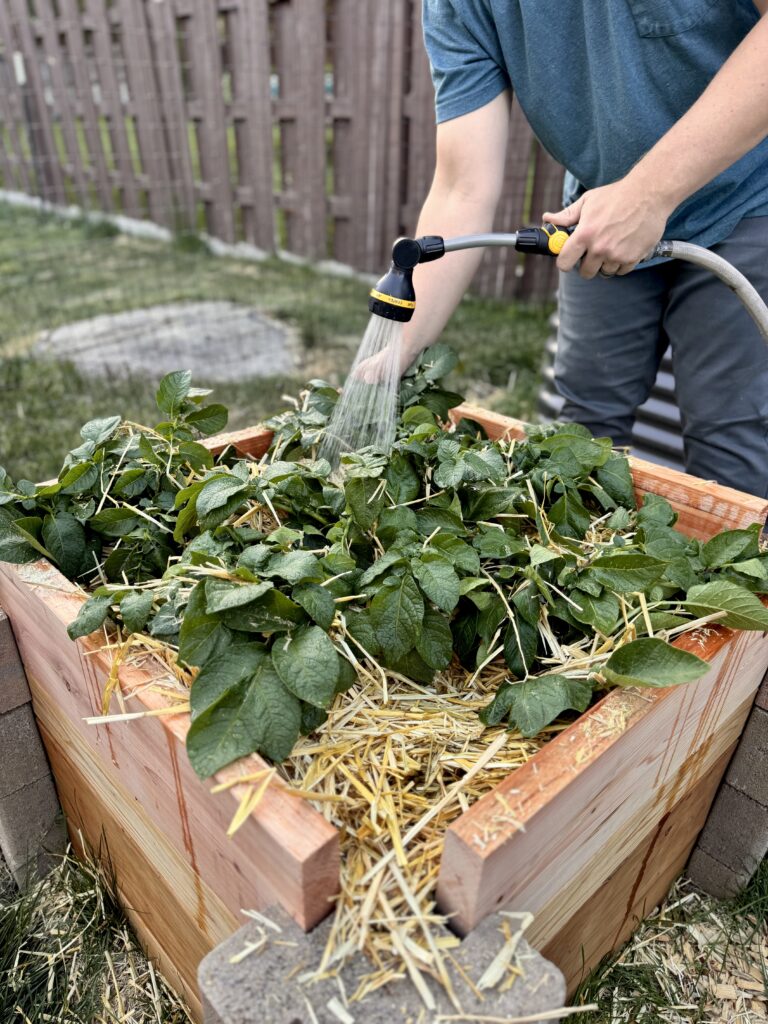
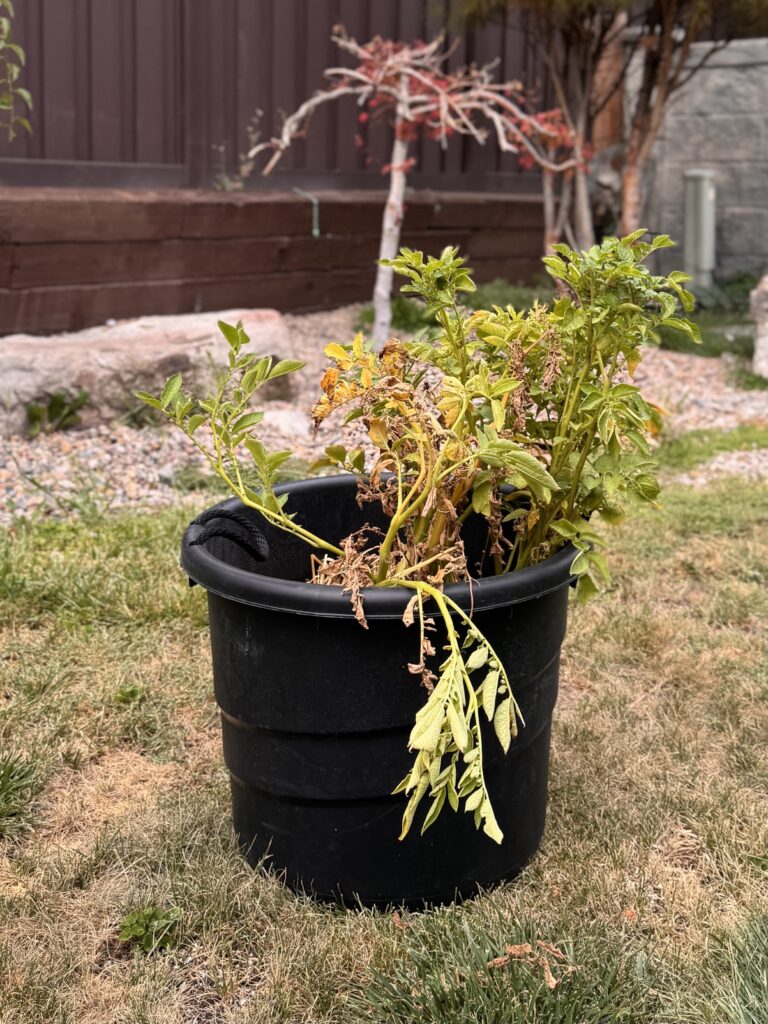
3. Variety Type
Indeterminate (late-season) varieties produce stolons longer. So if you’re well before expected maturity (e.g., before 90 days), new stolons are probably still forming.
Determinate varieties usually stop stolon production after a set time.
4. Careful Soil Probing (Optional)
Very gently dig a small spot near the stem without disturbing roots to check for tuber formation layers. If you see small tubers forming on new layers of buried stems, new stolons are active.
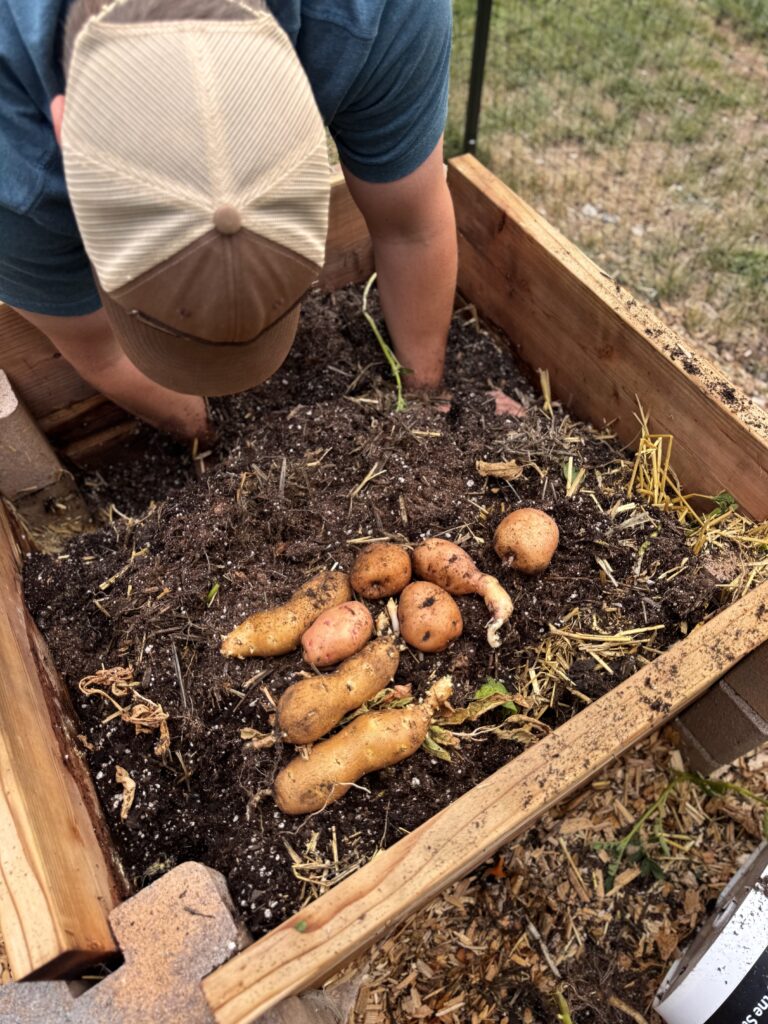
Determinate vs. Indeterminate Potatoes
- Determinate potatoes generally form tubers only downward from the seed potato, at or slightly below the original planting depth.
- Indeterminate potatoes can form tubers above the seed piece if stems are buried and allowed to send out new stolons.
| Feature | Determinate | Indeterminate |
| Growth habit | Short, bushy | Tall, vining |
| Maturity | Early (70–90 days) | Late (90–130+ days) |
| Tubers form | In a single layer | In multiple layers |
| Responds to mounding/towers | No | Yes |
| Typical plant height | 1–2 feet | Up to 4–6 feet (with mounding) |
| Tubers form location | Primarily below seed potato | Above and below seed potato |
“Early” or “Late Season” Instead of Indeterminate vs. Determinate Potatoes
Gardeners and seed catalogs usually focus on how long potatoes take to mature, calling them early-season or late-season, because it’s more practical for planning when to plant and harvest.
- Early-season potatoes mature quickly (about 70–90 days), tend to be shorter plants that stop growing sooner, and are often determinate or semi-determinate varieties.
- Late-season potatoes take longer to mature (90–130+ days), keep growing taller and producing tubers longer (indeterminate behavior), and usually require a longer growing season.
The botanical terms indeterminate and determinate describe growth habits. Whether plants keep producing stems and tubers or stop after a set period, but aren’t as widely used by casual gardeners because they don’t directly tell you when the potatoes will be ready to harvest.
In short:
- Early/late season = practical maturity timing
- Indeterminate/determinate = growth pattern and tuber formation
Most early potatoes are determinate (stop growing earlier), and most late potatoes are indeterminate (keep growing longer). Gardeners care more about harvest timing, so early/late is the common way to describe varieties.
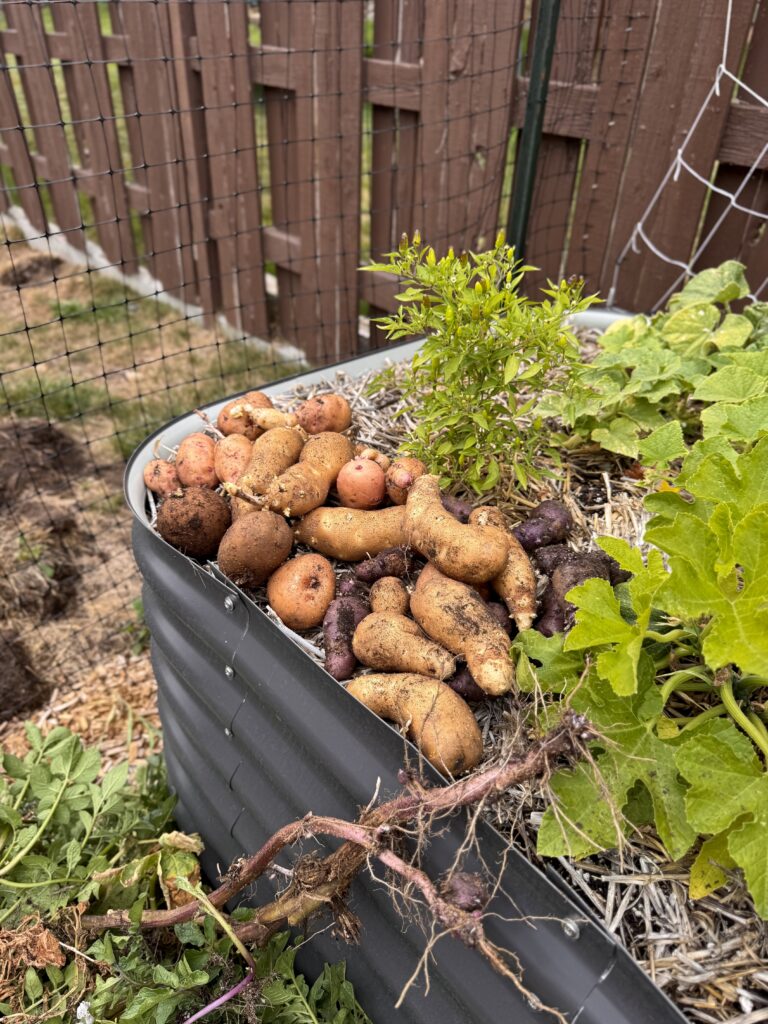
How Long Can Indeterminate Potato Plants Grow?
Indeterminate potato plants can continue growing for 100–130+ days, producing new stolons as long as environmental conditions support them.
Vertically, they can reach 4 – 6 feet tall when repeatedly mounded in towers or bins.
With each 4 – 6 inches of stem buried, there’s potential for a new layer of stolon formation, especially in rich, loose, cool soil.
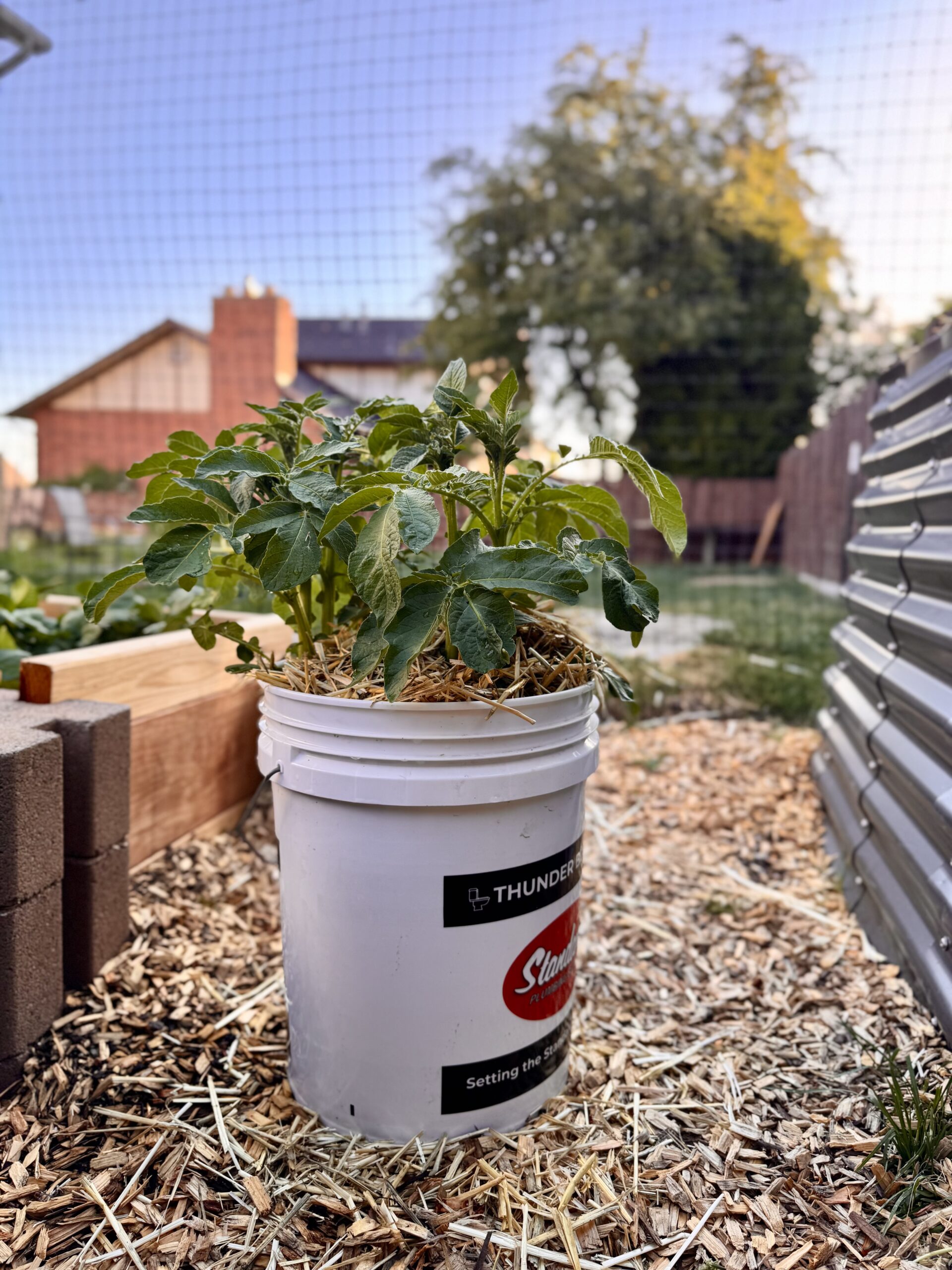
Potato Towers and the 100-Lb. Claim: Fact or Fiction?
History of the Claim:
- Stacking tires or barrels to grow potatoes has been used by gardeners for decades, especially post-WWII.
- The “100 lbs in 4 square feet” idea went viral around 2008, fueled by blogs and YouTube channels.
- Few verified reports have replicated this claim, especially in non-commercial home gardens.
Reality Check:
- Most gardeners get 10–30 lbs from a well-built tower using the right variety.
- Field trials and university studies show no consistent evidence that this method reliably reaches 100 lbs.
Benefits of Mounding:
- Protects tubers from sun (prevents greening)
- Promotes stolon growth in indeterminate types
- Improves drainage and reduces rot

Realistic Yield Expectations
Mounding can increase yields by 20–100%, but it won’t turn every plant into a 100-lb producer.
| Method | Yield per Plant | Notes |
| Flat planting (no mounding) | 2–3 lbs | Tubers form only at base |
| Light mounding (6–8″) | 3–5 lbs | 20–60% increase |
| Deep mounding / towers | 5–10 lbs | Only with indeterminate types |
| Exceptional tower (ideal soil + variety) | 15–30 lbs | Rare but possible |
| Viral claim | 100 lbs | Unverified & unrealistic |
How Many Plants Per Tower?
For a 2 ft by 2 ft potato tower, the ideal number of potato plants is usually 4 – 6 plants. Here’s why:
- Spacing: Potatoes need enough room for their roots and stolons to spread without crowding. About 12 inches between plants gives each enough space to develop tubers properly.
- Growth habit: If you’re using indeterminate varieties (which respond well to mounding), spacing them evenly allows for good airflow and nutrient access.
- Tower height: Since you’re growing vertically, you can mound soil or straw up to 18–24 inches or more to encourage stolon formation and more tubers.
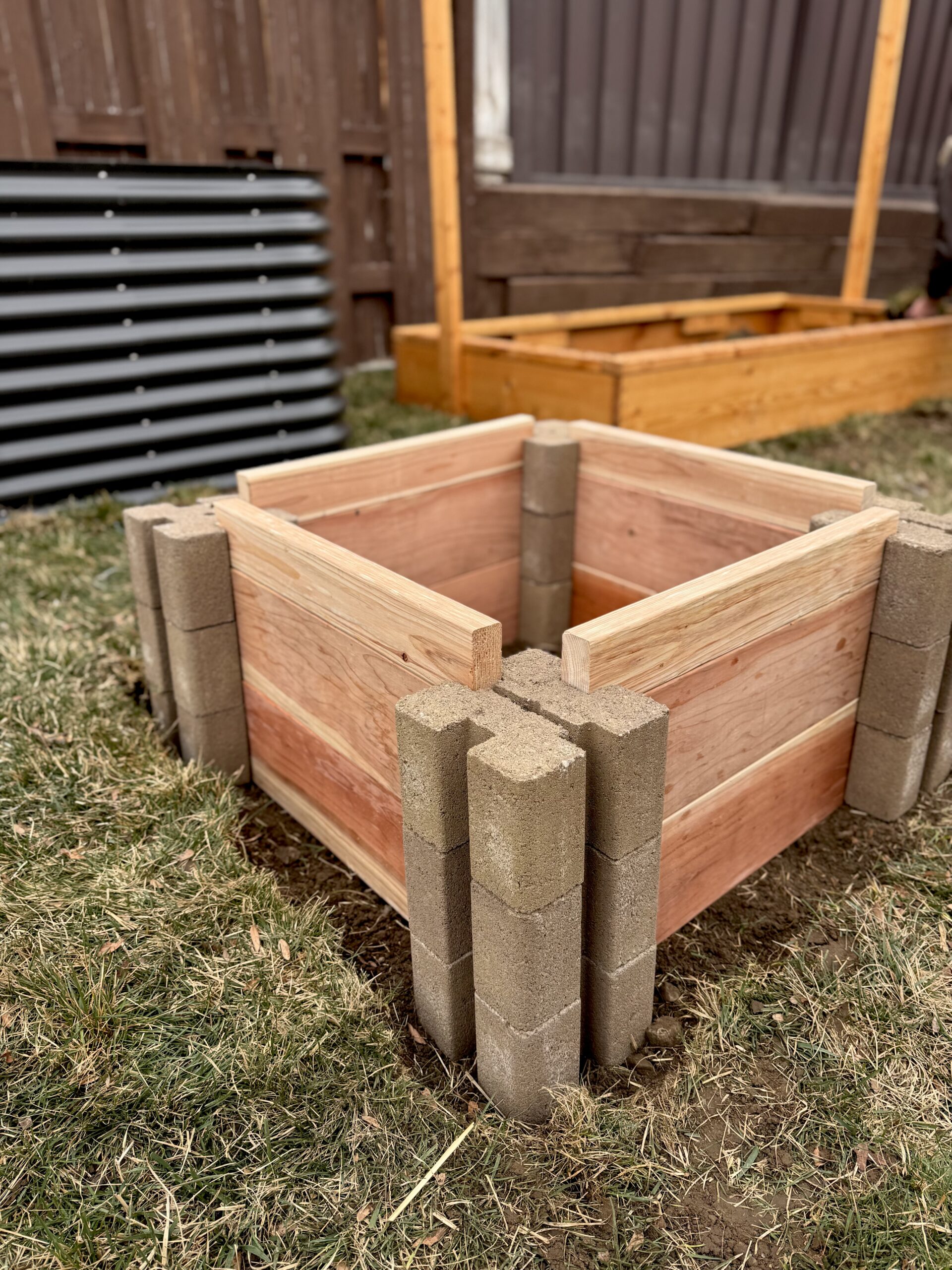
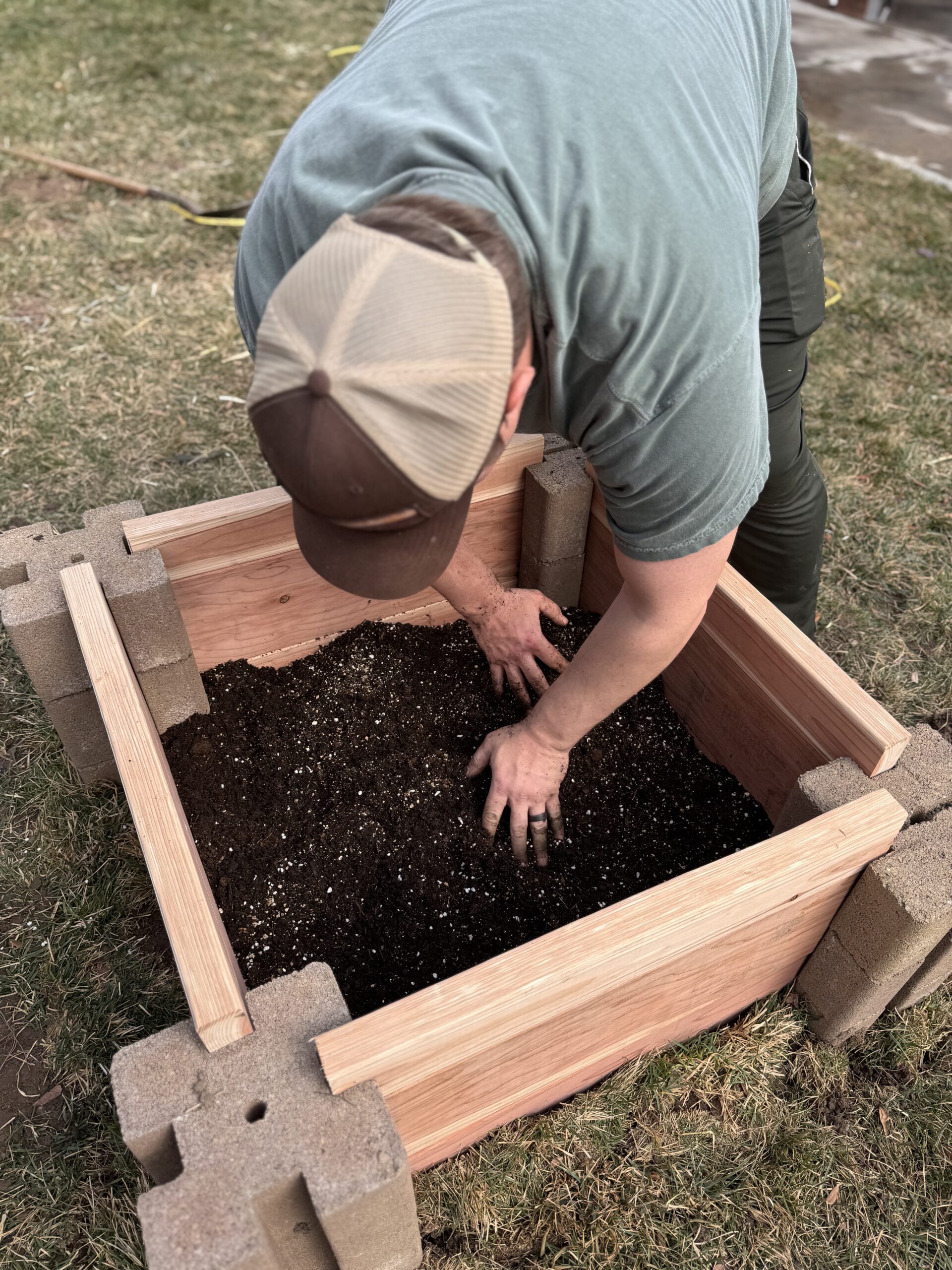
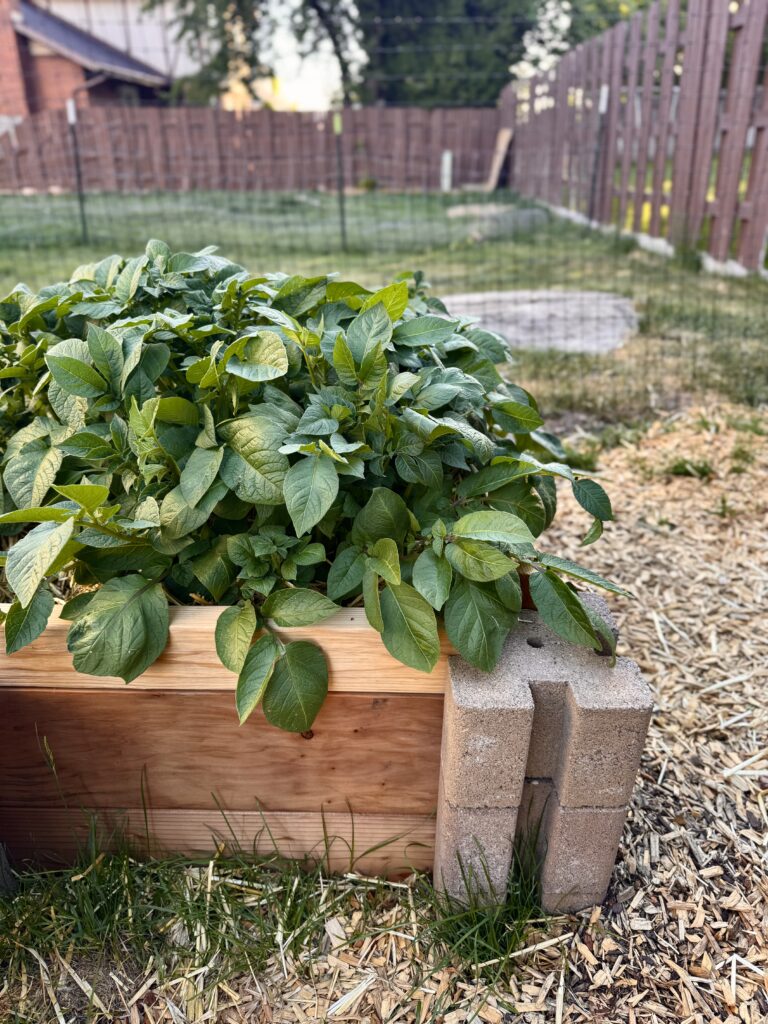
Indeterminate Potato Varieties
How to Test if a Potato is Indeterminate:
- Plant and mound in 4–6 inch increments.
- At harvest, pull back each layer to see where tubers formed.
- Only at the bottom?: Determinate
- Tubers formed at multiple levels?: Indeterminate
| Variety | Notes |
| German Butterball | Late-season heirloom, very productive |
| Russet Burbank | Classic baking potato, good vertical response |
| Bintje | Dutch heirloom, excellent stolon growth |
| Russian Banana (fingerling) | Vigorous and compact, great for towers |
| Elba | Disease-resistant late variety, suitable for stacking |
| Yellow Finn | Creamy texture, responds to deep mulching |
| Purple Majesty | Colorful, nutrient-rich, forms tubers at multiple depths |
Key Takeaways:
| Claim | Truth |
| Grow 100 lbs of potatoes in 4 sq ft | Fiction for most growers |
| Mounding improves yield | True, by up to 100% |
| Towers work well | With indeterminate varieties only |
| Nine plants in Tower = 100 lbs? | Unlikely, but 30–90 lbs is possible with ideal conditions |
| Potato stems grow indefinitely? | If indeterminate and well-fed, up to 6 ft tall |
| Determinate tubers form upward? | Mostly downward only |
Thanks for reading along, guys! If you enjoyed this blog post, check out my other gardening blog posts:
- How to Start a Garden on a Budget for Under $100
- Essential and Nice-to-Have Garden Products for Your Perfect Setup
- My Garden Setup: 3 Best Garden Containers for Every Gardener
- Understanding Garden Light and Shade: A Simple Guide
- How to Build a Homemade Trellis Using Cattle Panel
Follow me on social media for daily content and instructional videos about gardening!

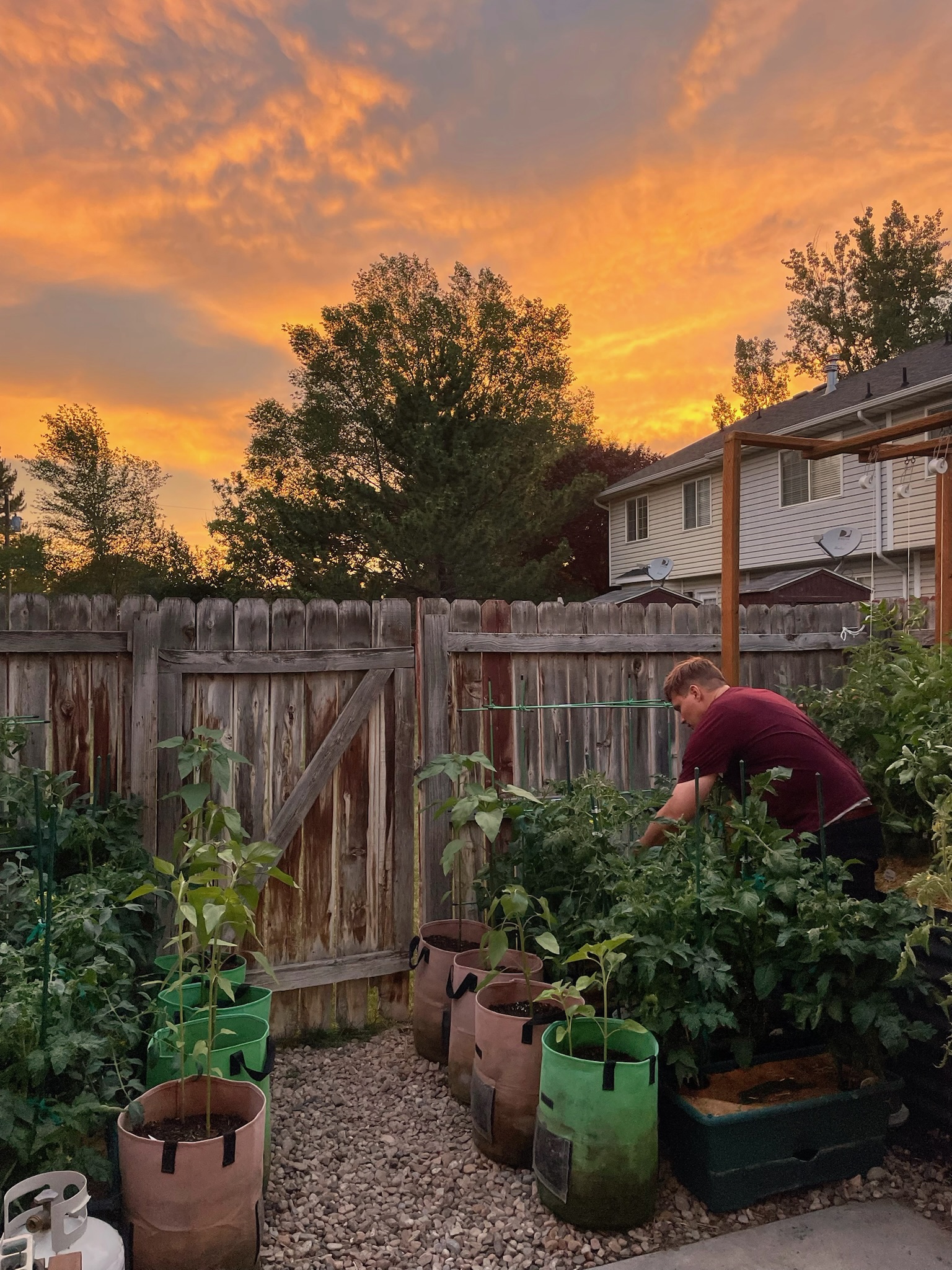



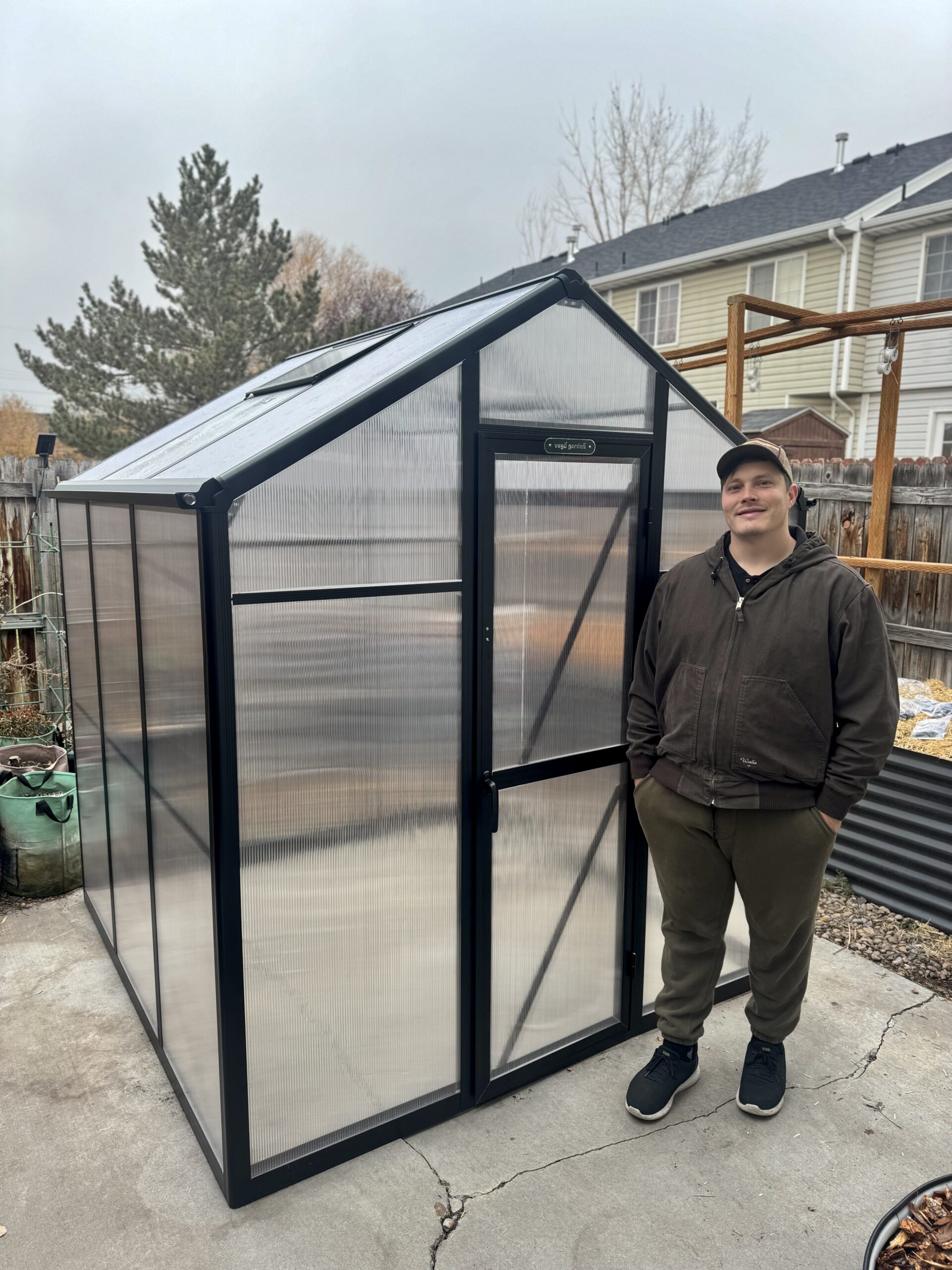

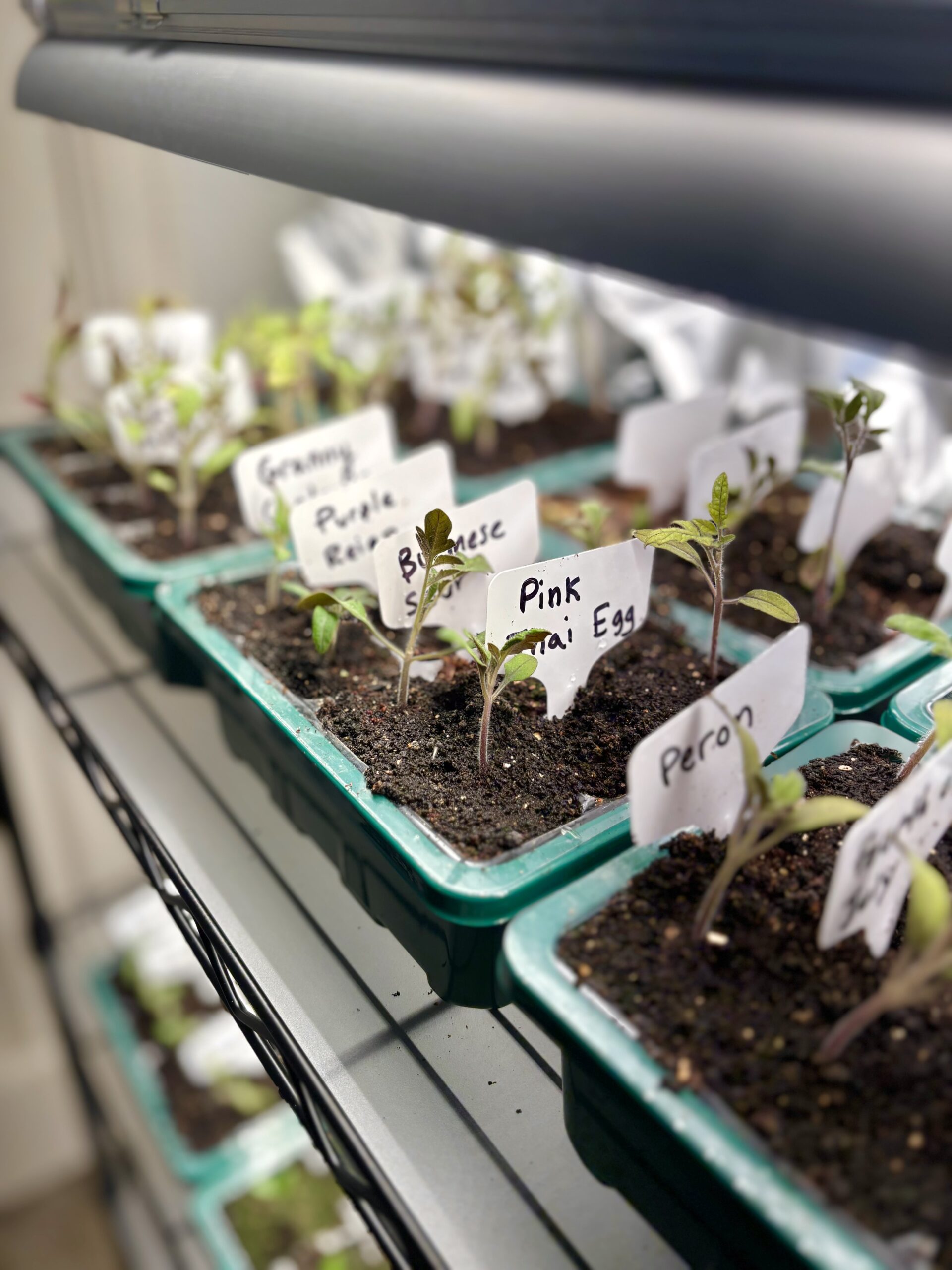
So interesting! I can see how this idea would become viral.
I appreciated the real harvest numbers because 100 lbs seems crazy